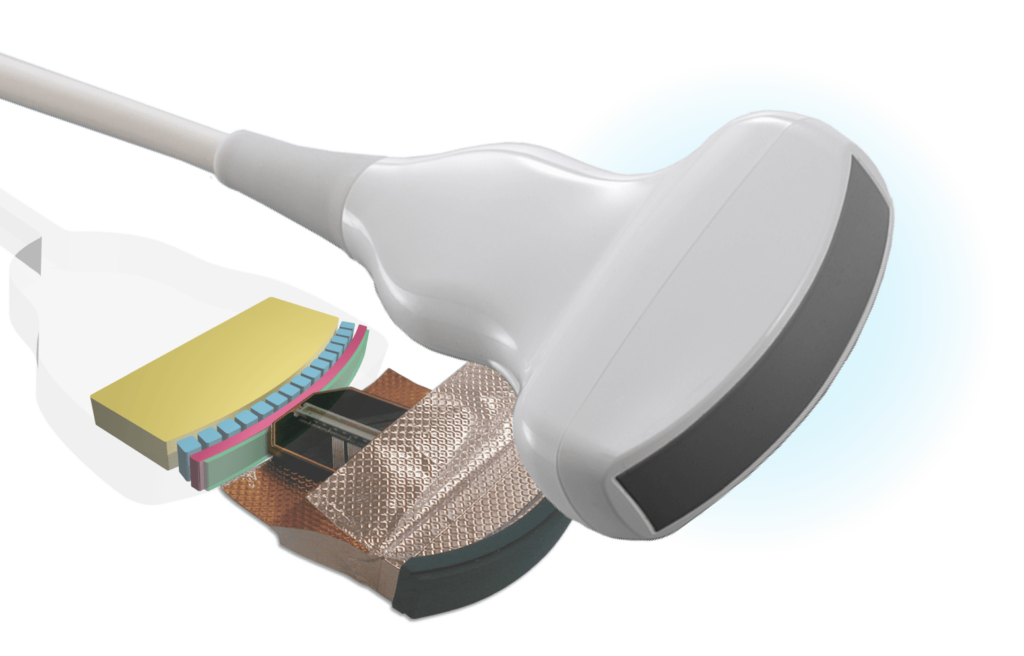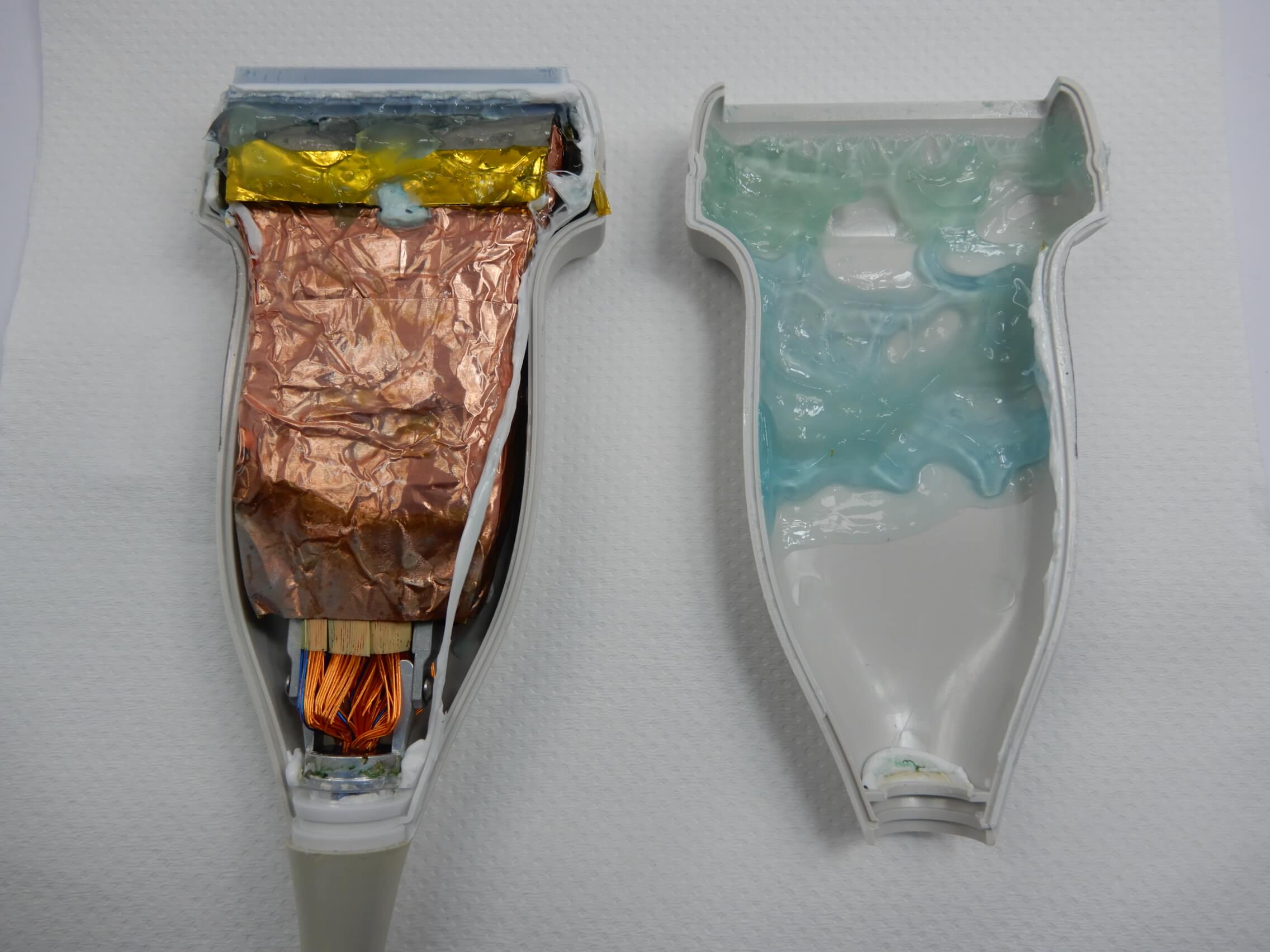In ultrasound imaging, probes and transducers play a critical role in producing high-quality images and capturing accurate diagnostic information. These essential tools vary in design, frequency, and application, allowing for tailored examinations of different body regions. Understanding the function and types of ultrasound probes and transducers helps healthcare professionals choose the right tool for specific medical imaging needs.
What Are Ultrasound Probes and Transducers?
Ultrasound probes, also known as transducers, are devices that generate sound waves and capture their echoes to create images of the body’s internal structures. The probe’s crystals convert electrical energy into sound waves, which travel through the body and reflect off various tissues. When these echoes return, the transducer captures them and converts them back into electrical signals, which the ultrasound machine then translates into images.
Key Functions of Ultrasound Transducers
Ultrasound transducers are specifically designed for diagnostic imaging, with primary functions that include:
- Generating Sound Waves: The transducer’s piezoelectric crystals emit high-frequency sound waves.
- Receiving Echoes: Transducers capture the echoes that bounce back from tissues, fluid, and other structures.
- Image Formation: By translating received echoes, the ultrasound machine forms images that help in diagnosing medical conditions.
Types of Ultrasound Probes and Their Applications
Each type of ultrasound probe has unique properties that make it suitable for different types of imaging. Here’s an overview of the main types of ultrasound probes and their specific applications:
- Linear Array TransducersLinear probes generate high-frequency sound waves, providing excellent resolution in superficial structures. With their rectangular imaging format, linear probes are ideal for applications requiring detailed imaging of areas close to the skin.
- Applications: Used extensively in vascular imaging, musculoskeletal imaging, and small parts imaging (like thyroid and breast exams). They are also popular in dermatology and for guiding procedures such as needle biopsies.
- Curvilinear Array TransducersCurvilinear probes, also known as convex probes, produce a wider field of view with moderate penetration depth, making them suitable for deeper structures. They operate at a lower frequency compared to linear probes, resulting in lower resolution but greater depth.
- Applications: Primarily used in abdominal imaging, OB/GYN scans, and pelvic examinations. They provide comprehensive views of organs and large areas, which is essential in prenatal care and general abdominal assessments.
- Phased Array TransducersPhased array probes emit sound waves at different angles, producing a sector-shaped image that allows for high penetration despite a small contact area. These probes operate at lower frequencies and are essential in imaging organs that are hard to access.
- Applications: Often used in cardiac imaging due to their ability to capture detailed heart motion and structure. Phased array probes are also valuable in thoracic imaging and other deep-organ assessments.
- Endocavitary TransducersEndocavitary probes are designed for internal examinations, allowing direct access to organs like the uterus, prostate, and bladder. These probes are generally curved or linear and are inserted into body cavities, providing close-range, high-resolution images.
- Applications: Commonly used in obstetrics and gynecology for pelvic and fetal imaging. They are also valuable in urology for prostate exams and other intra-cavity assessments.
- 3D and 4D TransducersThese transducers use advanced technology to create three-dimensional images, with 4D adding a time-lapse effect to show movement. The crystal arrangement in these probes enables complex imaging for detailed structural analysis.
- Applications: Primarily used in obstetrics for fetal imaging, they provide highly detailed visuals, enhancing prenatal care and diagnosis. They are also helpful in oncology for detailed views of tumors.
- Specialty Transducers (Intravascular, Microconvex, and TEE Probes)Specialty probes are designed for specific diagnostic tasks, such as intravascular imaging, transesophageal echocardiography (TEE), and small animal veterinary imaging. These probes have unique shapes and sizes, making them highly versatile in specific medical scenarios.
- Applications: Intravascular ultrasound (IVUS) is used in cardiology to examine blood vessels, while TEE probes are ideal for imaging the heart from within the esophagus, providing valuable insight into cardiac function and structure.

Choosing the Right Ultrasound Probe for Diagnostic Needs
Selecting an appropriate ultrasound probe depends on several factors:
- Depth of Target Structure: Deeper structures require lower frequency transducers (e.g., phased array), while superficial structures benefit from high-frequency probes (e.g., linear array).
- Field of View Requirements: Wider areas, like the abdomen, are best suited to curvilinear probes, while more focused exams (e.g., cardiac) often use phased array transducers.
- Patient Comfort and Access: Endocavitary and intravascular probes provide close-up images but must be chosen with patient comfort and procedural requirements in mind.
- Type of Information Needed: 3D/4D transducers provide a more comprehensive view and may be preferable when depth and dimensionality are crucial, such as in prenatal care.
Innovations in Ultrasound Transducers
Recent advancements in ultrasound transducer technology have led to greater accuracy and efficiency:
- Matrix Array Transducers: These transducers use a matrix of piezoelectric elements for enhanced 3D imaging, offering highly accurate and detailed visualization.
- Wireless Probes: Portable wireless transducers connect to mobile devices, making ultrasound accessible in remote or emergency settings.
- Micro-Miniaturized Probes: Smaller, flexible probes are now available for complex procedures, especially for intraoperative and catheter-based imaging.
Best Practices for Ultrasound Probe Maintenance and Safety
Maintaining ultrasound probes is essential for ensuring image quality and patient safety:
- Regular Cleaning and Sterilization: Probes should be cleaned after each use and sterilized according to the specific protocol for the type of probe and examination.
- Inspect for Damage: Regularly check transducers for cracks, wear, or cable damage to prevent any impact on performance or patient safety.
- Storage Protocols: Store probes in protective cases or designated areas to avoid physical damage and maintain functionality.
Conclusion: The Importance of Ultrasound Probes in Diagnostic Imaging
Ultrasound probes and transducers are indispensable in medical diagnostics, offering precise, non-invasive insights into patient health. By understanding the different types and applications of ultrasound probes, healthcare professionals can select the right tools to enhance diagnostic accuracy, patient care, and procedural outcomes. As ultrasound technology continues to advance, these probes will further support improved diagnostics and treatment, providing detailed imaging across various medical fields.
Related: Understanding Imaging Techniques for Enhanced Diagnostics with Ultrasound Modes

